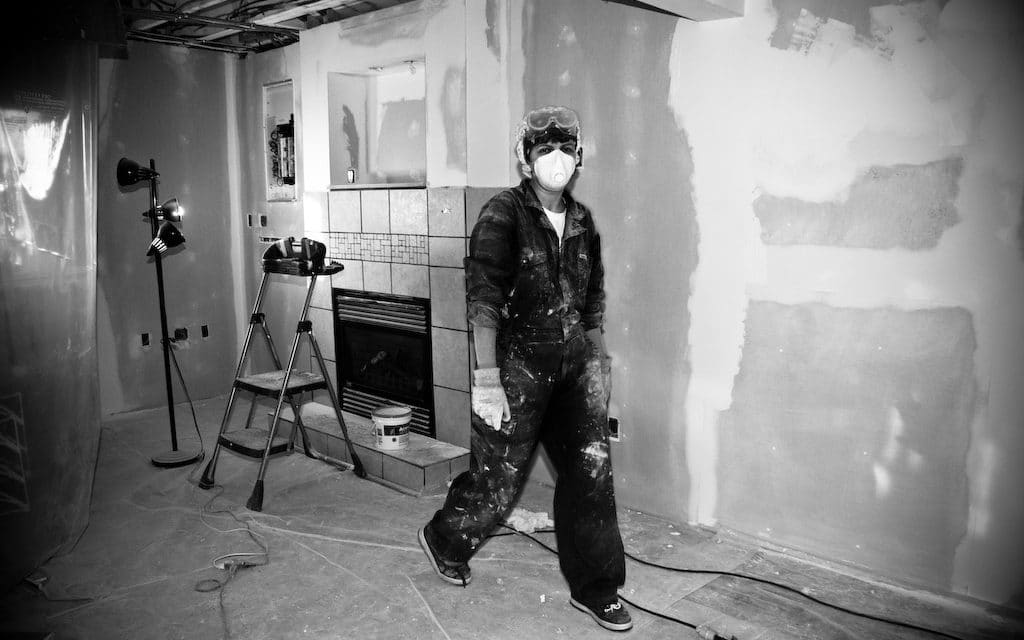When it comes time to do a home renovation, it’s often easy to get swept up in creating the new design and choosing all the products. After that, it’s a race to the end to see the finished product. But, have you ever thought about what types of dust and contaminants you could be exposed to during demolition? Or, what types of chemicals might be released from the new products? The list includes lead, asbestos, mold, VOCs, formaldehyde, phthalates, and many more.
There are some things that you should not try to DIY!
If you have lead, asbestos, or extensive animal droppings in your home, you will need to hire a professional to safely remove and process the waste. These types or hazards are most dangerous when disturbed, so a renovation increases exposure risks.
If your home in the US was built before 1978, there is a good chance that it has lead-based paint. This is often under layers of non-lead paint and is most dangerous as dust that can be breathed in or ingested.
Asbestos was a common component in building materials through the 1970s. It was often used as insulation for pipes or around stoves or boilers, cement roofing or shingles, and even backings or adhesives on vinyl floors. In older homes it may even be found in blown-in home insulation.
If you suspect that there may be an issue, be sure to have an industrial hygiene firm run tests to see if these hazards are present before you begin renovation. If lead or asbestos is found, licensed professional removal and disposal will be required. These contractors will make sure that a containment system is in place to minimize any exposure to airborne fibers.
Airborne hazards are found in common building products.
Volatile Organic Compounds (VOCs) can be released when using paints, coatings, adhesives. Some building products such as cabinets or trim boards may also off-gas VOCs.
Look for products labeled low-VOC or no-VOC.
Consider products which reduce VOCs in your home such as wool insulation or specialty gypsum board or paints.
Use in a well-ventilated area.
Wear masks, goggles and gloves to protect your lungs and skin.
If possible, apply sealers and finishes outside and allow to dry before bringing inside your home.
Some People who are more susceptible to VOCs such as those with asthma or other breathing issues, pregnant women, infants or the elderly should limit their exposure. Consider having them stay elsewhere while renovations are underway.
Watch out for Mold!
If you find mold, stop renovations and immediately mitigate. The EPA offers some pointers on how to proceed.
If the moldy area is less than 10 square feet, you may choose to take on the job yourself unless the damage was from sewage or other contaminated water.
Avoid breathing mold spores which can be harmful or fatal. Wear a properly fitted N-95 respirator, goggles and long gloves when working in contaminated areas. Take care not to spread mold contamination on clothing or in the air.
Remove the source of the water and all contaminated materials. Dry thoroughly before proceeding. Hard surfaces can be cleaned, dried and treated to prevent regrowth.
Contain the problem.
Seal off the areas to be renovated from the rest of your home using heavy plastic coverings on doorways. Vacuum dust and debris with a vacuum equipped with a HEPA filter. Wipe down surfaces with a wet wipe to remove dust.
Ensure that there is adequate outside ventilation while you are working. Use an air filter to minimize airborne contaminants.
Lock up any chemicals in an area inaccessible to children or pets. Do not put toxic chemicals into unmarked containers. Always dispose of hazardous waste chemicals as required by law.
Renovating your home can be a source of pleasure or a toxic nightmare.
Be aware of potential hazardous exposure and take action to prevent health problems during renovation or in the future by choosing healthy materials.








